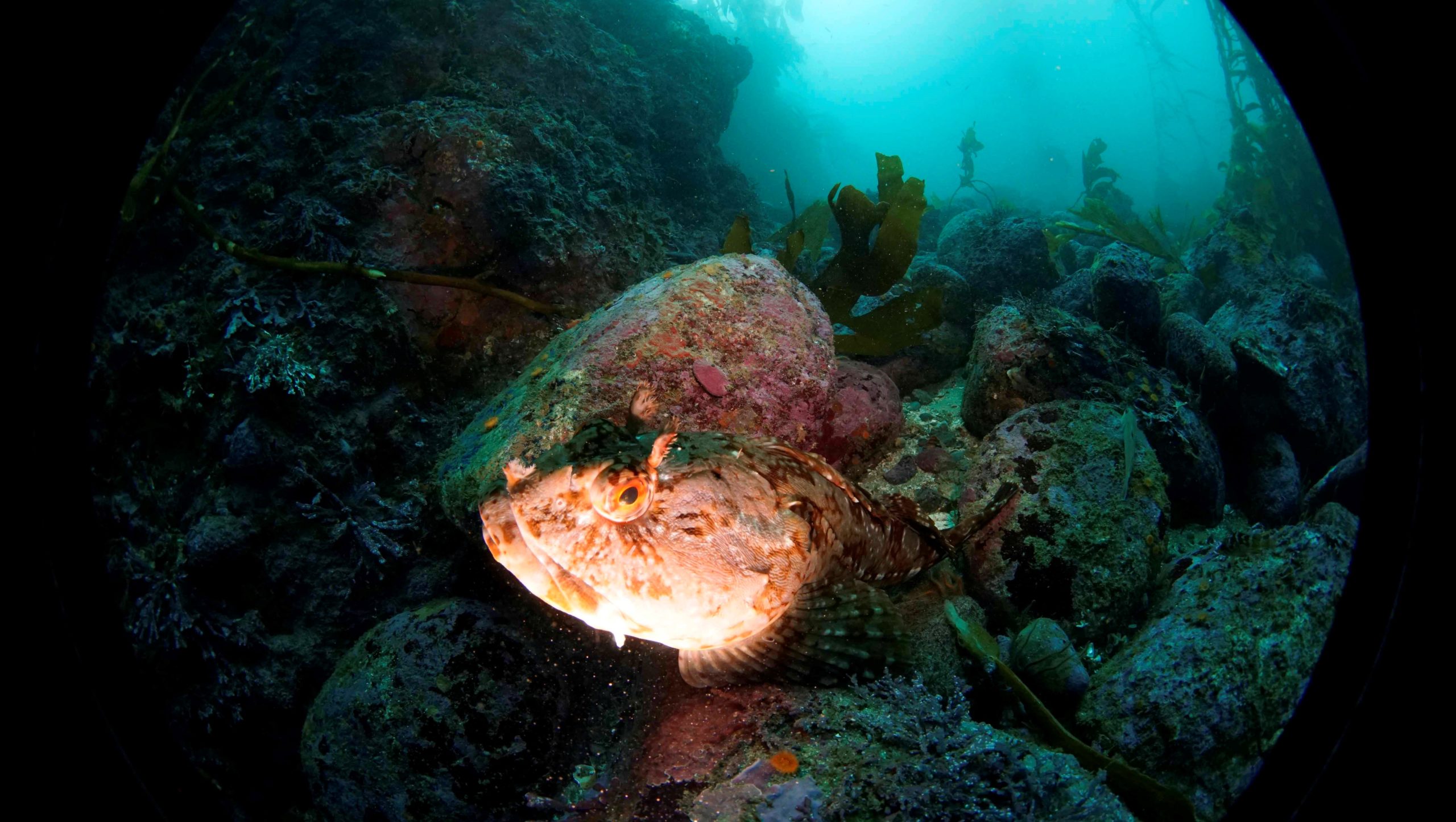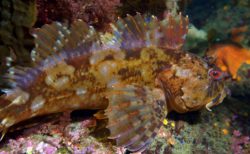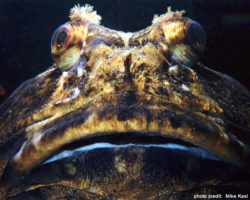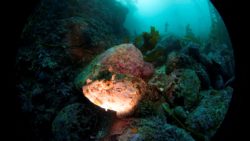
Sea Wonder: Cabezon

A Cabezon resting on a ledge at Dali’s Wall (near Pebble Beach) within Monterey Bay National Marine Sanctuary. This dive was conducted as part of the REEF expedition in Monterey, CA. Photo: Chad King/NOAA
Cabezon means large head in Spanish, and the cabezon (Scorpaenichthys marmoratu) is a fish aptly named for its distinctly large head with an equally large mouth! Cabezon are a large sculpin species native to the Pacific Coast and the largest member of the sculpin family found in Washington waters and the Monterey Bay area in California.
Description
Cabezons are a large, scaleless fish that is quite smooth but covered in small spines, which creates an intimidating appearance. They are in many ways similar in appearance to lionfish and stonefish. They are dark green or dark brown in color with mottling patterns along their sides, which help them blend into their surrounding environments. They have fan-like fins on each side of their body and a vertically oriented tail at the end of their bodies. Their mouths are quite large in comparison to the rest of their bodies, though they contain only a few small – yet very sharp – teeth. When fully grown, they can reach lengths of nearly three-and-a-half feet and weight around 4 pounds, but the heaviest one ever caught weighed nearly 25 pounds.
Diet & Habitat

Cabezon sculpin in Olympic Coast National Marine Sanctuary. Photo: Mike Kesl/NOAA
Cabezons are carnivorous, relying on a diet of crustaceans, mollusks, and fishes, though they are indiscriminate and eat whatever will fit in their mouths. They can crush the shells of clams and crabs with their sharp teeth and powerful jaws. Since they generally blend into the environment, cabezons usually get their food by hiding and then ambushing unsuspecting passers by. Their natural predators include sharks and larger fish, though they are also an important game fish targeted by human fishers. They are commonly targets of game fishing activities offshore or from piers along California’s coast.
Cabezons tend to live near coastlines in kelp forests and rocky, sandy, and muddy, hard bottoms. They are native in Pacific waters and have a range that spans from Alaska down the American west coast and down to Mexico’s Baja peninsula. In the National Marine Sanctuary System, cabezons may be found in or near Olympic Coast, Greater Farallones, Monterey Bay, Cordell Bank, and Channel Islands national marine sanctuaries.
Life History
Cabezons hatch from eggs as small larvae, which are not strong enough to swim against ocean currents. They drift along, at risk of being eaten by larger animals, until they grow into small, silvery fish that hide among kelp forests and other marine vegetation. As they enter the juvenile stage of their life cycle, they travel closer to shore and settle in and near tidepools, which are safer and full of food their size. As they mature, they travel farther offshore into reefs, kelp beds, and other ecosystems.
Cabezons tend to be solitary and territorial, though several individuals may live near each other in the same kelp forest or ecosystem. Adults travel to rocky outcrops to spawn, with males and females releasing gametes into the water column for fertilization. These eggs are poisonous to humans, birds, and other mammals Males are ferocious in guarding their eggs from predation, leaving the nest only to ward off potential predators and again when the eggs have all hatched.
Threats & Conservation
Cabezon populations appear to be stable but are at risk of overfishing as they are desirable for commercial and recreational fishers and for aquaria. On America’s west coast, cabezons account for a large part of the shallow water rockfish fishery. They are managed federally by NOAA Fisheries and, the California Fish and Game Commission (CFGC) and the California Department of Fish and Wildlife (CDFW) regulate and manage the fishery in state waters. Other threats include habitat loss and degradation, ocean acidification, and pollution.

Male cabezon within a kelp forest in Monterey Bay National Marine Sanctuary. Photo: Chad King/NOAA
